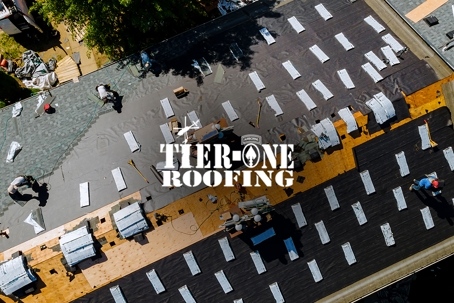Your Roof Warranty Might Be Worthless (Here’s Why)
A roof warranty sounds like peace of mind. After all, if something goes wrong, you’re covered… right? Not always. Many homeowners are shocked to learn their roof warranty won’t cover the very problems they’re facing—or that their coverage was voided years ago without their knowledge.
At Tier-One Roofing, we’ve helped countless homeowners navigate warranty headaches, and we’ve seen how simple mistakes can cost thousands. Here’s what you need to know about roof warranties and how to protect yourself.
The Two Types of Roof Warranties
Manufacturer Warranty: Covers defects in roofing materials. If shingles fail prematurely due to manufacturing flaws, this is your safety net.
Workmanship Warranty: Covers installation errors. This comes from the contractor, and coverage varies widely depending on who installed your roof.
A strong roof warranty should have both. But even when you have them, coverage can be limited or voided by common issues.
Why Your Warranty Might Be Worthless
1. Improper Installation
Most manufacturer warranties require that your roof be installed to exact specifications. If your contractor cut corners—wrong nail patterns, improper flashing, or skipped underlayment—the warranty won’t apply.
2. Poor Ventilation
Ventilation directly affects shingle life. If your attic overheats and damages shingles, it’s often considered “improper use,” not a defect.
3. Unauthorized Repairs
Did you hire a handyman or unlicensed roofer for a quick patch? That could void coverage, even if it’s unrelated to the main problem.
4. Lack of Maintenance
Many warranties require proof of regular roof maintenance. If you haven’t had periodic inspections or cleaning, coverage may be denied.
5. Transfer Issues
Buying a house with a “warrantied roof” doesn’t always mean you have coverage. Some warranties don’t transfer to new owners, or require transfer paperwork within a specific timeframe.
The Fine Print That Trips People Up
Warranties often sound better than they are:
“Lifetime” warranties often mean only a limited period of full coverage before prorating kicks in.
Wind and hail exclusions are common, especially in states like Oklahoma.
Labor coverage limits may mean you pay for installation costs even if materials are covered.
Tier-One Roofing reviews warranty paperwork for homeowners so you know exactly what coverage you have—and what steps you need to take to keep it valid.
Real Homeowner Story: The Voided Warranty Shock
A homeowner had a 30-year shingle warranty but faced leaks after only 12 years. They assumed repairs would be covered. The manufacturer denied the claim because attic ventilation didn’t meet code—and the installation contractor had gone out of business.
Total cost to the homeowner: $14,000 for a new roof.
This happens more often than people think—and it’s preventable with proper installation and documentation.
How to Protect Your Roof Warranty
Choose a Certified Contractor: Many manufacturers only honor full warranties if the roof is installed by certified contractors.
Keep Records: Save contracts, inspection reports, and maintenance documentation.
Schedule Regular Inspections: Annual or semiannual inspections keep your warranty valid and catch problems early.
Avoid Unauthorized Work: Always call your primary roofing contractor before making repairs.
Read Your Warranty: Know what’s covered and what’s excluded before you need it.
Tier-One Roofing is an authorized installer for top roofing manufacturers, which means your warranty stays strong and valid.
Why a Good Contractor Is as Important as a Good Warranty
The best shingles in the world won’t protect you if installed incorrectly. And a weak workmanship warranty can leave you footing the bill even if materials are covered. That’s why you need:
A reputable contractor with proven installation expertise.
A company that will be around to honor its workmanship warranty.
A team like Tier-One Roofing, which prioritizes doing the job right the first time.
The Cost of Assuming You’re Covered
We’ve seen homeowners delay repairs because they thought the warranty would cover it, only to learn:
The damage wasn’t covered.
The claim was denied due to voided coverage.
The problem worsened, multiplying repair costs.
A roof warranty is only as strong as your installation, documentation, and maintenance plan.
Your Next Step
If you’re not sure about your warranty—or if you’ve never read it—you’re not alone. Most homeowners don’t until something goes wrong.
Call Tier-One Roofing today for a free roof inspection and warranty review. We’ll check your roof’s condition, document key details for coverage, and give you clear recommendations so you know you’re protected.
Because the worst time to find out your warranty is worthless is when you actually need it.

